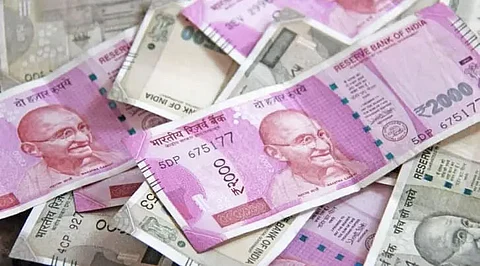
- Home
- Live Blog
- Breaking News
- Top Headlines
- Cities
- NE News
- Sentinel Media
- Sports
- Education
- Jobs

* Ghost beneficiaries abound in non-existing sar areas!
STAFF REPORTER
GUWAHATI: The exact number of sars of the Brahmaputra in the State is hazy, but the number of sar dwellers and benefits of various schemes meant for them are even hazier. Riding on such a hazy situation, an official-contractor nexus has been allegedly swindling crores of rupees of various schemes in the name of 'ghost sars and beneficiaries'.
The number of sars of the Brahmaputra keeps on changing frequently. While many sars often disappear, some new ones come up. To keep the track of nearly accurate number of sars of the mighty river, the survey of sars and their population is a must at a regular interval of five years.
What has made the situation quite hazy is that there has been no survey of sar and sar population in the State for the past 17 years. The last survey of sars in the State was conducted in 2002-03 when the number of sars of the Brahmaputra in 14 districts was around 1,800 with a population of 25 lakh. Now nobody knows the exact number of sars and their population. Thus, the ground reality remains that the Directorate of Char Area Development, Assam doesn't have the exact number of sar statistics, including population inhabiting such areas.
There are allegations that taking the advantage of this hazy picture, an official-contractor nexus has been swindling funds to the crores every year. There are various schemes meant for the welfare of sar dwellers. The benefits may be bicycles, e-rickshaws, sewing machines, Tara hand pumps, solar home lights etc., for which crores of rupees are spent every year.
Against such a backdrop, there are allegations that most of the sar dwellers in subdivisions like Lahorighat, Borduwa, Mayang, and Moirabari among others spread across Morigaon and Nagaon districts, have not been getting the benefits of any such schemes of which they are 'target beneficiaries'.
According to the survey, from 1992-2003 the rise in the number of sars in the State was 7.7 per cent. The startling decadal population growth in sar areas from 1991-2001 was 55.6 per cent. This was against the overall decadal population growth of 18.8 per cent in the State. The rise in population in sars is attributed to the lack of family planning, education, awareness on population boom and other factors. Besides, people of suspected nationalities remain blended with them.
According to the survey of 2003, the sars in the State had 1,852 lower primary schools, 574 middle schools, 218 high schools, 8 higher secondary schools and 18 colleges.
According to sources in the Minority Development Department, an immediate survey of the sars in the State is a must so as to prepare the list of genuine beneficiaries of various schemes meant for the bonafidesar dwellers, else funds will continue to be drained out of the State exchequer.